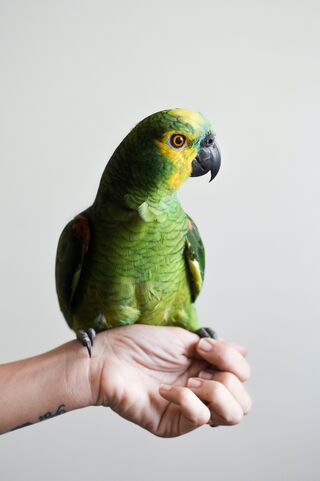

I see many college-aged students in my private psychiatry practice. A number of my 18- to 25-year-old patients took a semester or year off from their campuses in 2020 and early 2021—when the pandemic hit—to study remotely or take a break from school. Simultaneously, I noticed that dogs, cats, cockatiels, and ferrets began to pop up as these young adults’ living companions. Pets can be a great way to ease loneliness during a fraught time. But I wasn’t prepared for what happened as campuses began to reopen.
As fall 2021 approached, I was besieged by requests to verify the need of pets as “emotional support animals” (ESAs) so they could be allowed in campus residence halls with students. While not a new phenomenon, the ESA trend appears to have intensified during the pandemic. Surprisingly, it can be a complex and multilayered endeavor. There is confusion about the definition of an ESA, who is eligible, and how to get an animal approved for campus.
Here is what I found:
This is not even close. The difference between pets and ESAs is the degree of impact—and who is impacted. While pets can give pleasure and assuage loneliness, emotional support animals can be lifesaving for someone with a major mental illness.
An emotional support animal is defined as one that provides comfort and helps to relieve symptoms of a person’s disability. The word “disability” is important here. The student needs to have a documented medical condition such as major depression, bipolar disorder, post-traumatic stress disorder, or another health or mental health condition that meets the definition of disability under the Fair Housing Act of 1988 (FHA). Unlike a service animal that is trained to perform specific tasks, ESAs don’t need any special instruction.
There is a sturdy legal bulwark that supports ESAs in college dormitories. Emotional support animals are now recognized under two disability-related federal laws: Section 504 of the Rehabilitation Act of 1973 and the FHA. The U.S. Department of Housing and Urban Development (HUD) provides legal oversight of ESAs under the Fair Housing Act. At colleges and universities, this translates into a working partnership between the campus housing office and the accessibility office.
My patient Carol, a junior at a small East Coast liberal arts college, has a history of major depression. Her depression has improved since high school, but she still struggles with low motivation and high anxiety. Bouts of loneliness during the pandemic led her to adopt two ferrets named Ozzie and Moe. As Carol explained, “Ozzie is energetic and cheerful, and forces me to get out of bed and be more active. Moe is affectionate and provides a comforting presence, which helps with my anxiety.” Carol was determined that both Ozzie and Moe would be an integral part of her campus experience.
Likewise, my patient Josie—who has panic disorder—asked for permission to have a cockatiel at her campus. Josie explained that her bird is attuned to human emotions. “When I’m anxious the bird is empathic and will also feel it and make noise… this will shake me out of my attack.” Taking the daily steps to care for her bird also brings comfort to Josie.
THE BASICSIn order to have an animal on campus, the student’s treating clinician must provide written justification that the animal will alleviate disability. Enjie Hall, the director of accessibility and disability resources at the University of Toledo in Ohio, said that it’s been a learning curve to detect fraud. “It took a bit of time to catch up with the fact that some of the documentation was fake… some of the letters are very broad.”

Many colleges now request that the student have an established clinician-patient relationship before coming onto campus, as the clinician needs to know the student well enough to specify how the animal will benefit them emotionally. Unfortunately, there has been a parallel increase in for-profit ESA schemes. A Google search for “emotional support animal letter” yielded more than a dozen sites—most offering letters for a fee and only a few even mentioning consultation with a mental health professional.
Depression Essential ReadsWhen Carol asked for permission to bring her two ferrets to campus, I was pleased that this request was rigorously evaluated by her school. I needed to provide both verbal and written documentation that each animal would support Carol in a different way. My commentaries for both Carol and Josie were specific, based upon my knowledge of their conditions and how their animals could provide succor.
This is no longer the case. In June 2021, the first peer-reviewed scientific study of the tangible benefits of emotional support animals was published in Human-Animal Interaction Bulletin. In the study, shelter animals were placed with adults (not college students) who had mental illnesses like Bipolar Disorder or Major Depression.

At the end of one year, the researchers found a statistically significant decline in depression, anxiety, and loneliness using standardized rating scales. There were also trends towards increases in the “love” biomarker hormone oxytocin and decreases in the “stress” hormone cortisol, although these results didn’t reach statistical significance.
But the results of this pilot study are encouraging. Dr. Janet Hoy-Gerlach, professor of social work at the University of Toledo and the study’s lead author, concluded that “your animal can be a partner with you in your mental health.”
Both Carol and Josie are thriving with their emotional support animals. To students who are considering an ESA: Know that your animal can be an important part of your mental health treatment plan. But it is essential that you work with your treating clinician and campus accessibility and housing offices to find the best path forward.
Facebook/LinkedIn image: Diego Cervo/Shutterstock